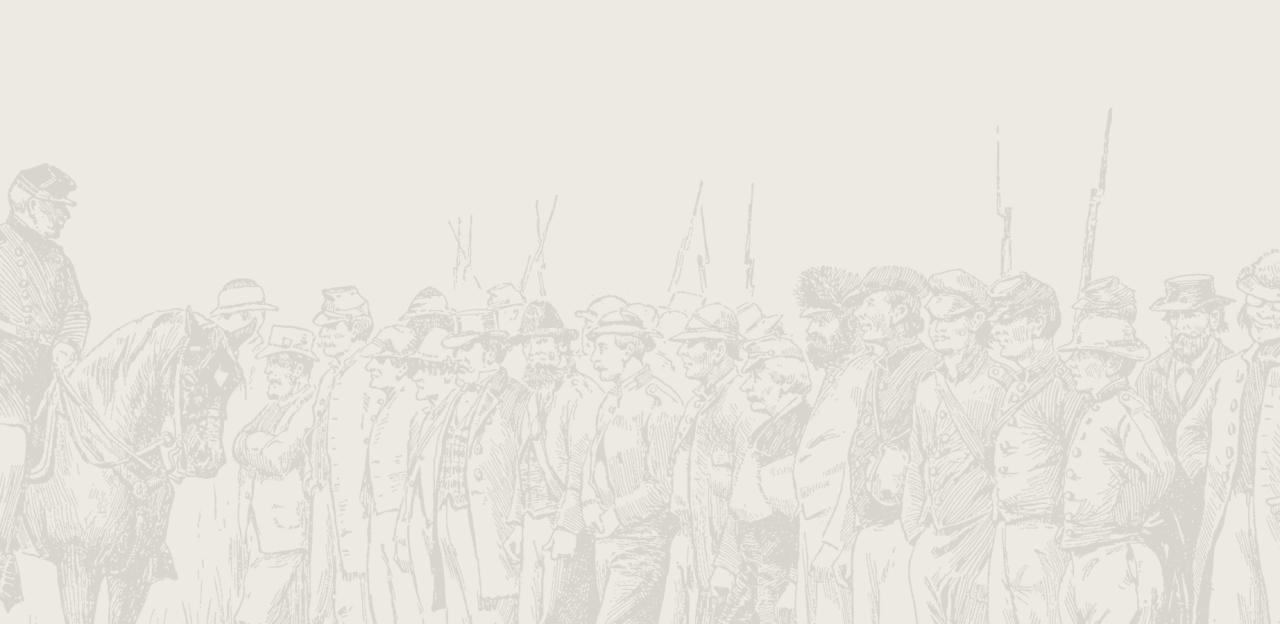Franklin

The Battle of Franklin
Second Battle of Franklin
After the fall of Atlanta on September 1, 1864, General John Bell Hood and the 30,000-man Army of Tennessee raced into Tennessee, hoping to divert William T. Sherman’s attention from the tender underbelly of the Confederacy by threatening his supply base at Nashville. Sherman did not take the bait, and instead dispatched General John Schofield’s Army of the Ohio, 30,000 strong, to protect Nashville while the rest of Sherman’s army simply left their supply line behind and marched to the Atlantic coast, forcibly securing whatever they needed to sustain themselves from the Confederate citizens in their path.
25,000 Union soldiers under George Thomas were entrenched in Nashville. If Schofield could reach them before Hood, then he would enjoy a commanding numerical advantage on the battlefield. Hood’s hopes for a successful campaign rested on defeating Schofield before the two forces joined. After a month of sparring along the Tennessee and the Duck Rivers, on November 28 Hood managed to divide Schofield’s army and surround a portion of it in the riverside town of Columbia, Tennessee.
Unfortunately for Hood, miscommunication and confusion in the Confederate ranks meant that his trap failed to snap shut. In what became known as the Battle of Spring Hill, Schofield managed withdraw his force to Franklin mostly unscathed. Spring Hill was a catastrophic missed opportunity—half of Schofield’s army passed within earshot of Confederates camped along the road that night without being brought to battle. As his army filed into Franklin Schofield reformed his brigades into an imposing defensive line.
Hood woke up on the 29th “wrathy as a rattlesnake.” The failure at Spring Hill was infuriating—at a council of war that morning he went so far as to accuse the army of cowardice. He ordered a pursuit to Franklin, where he would have one more chance to pulverize Schofield before he reached Nashville.
But Franklin did not offer the same possibilities as Spring Hill. Instead of attacking a surrounded and outnumbered enemy, the 20,000 Confederates at Franklin faced a frontal assault over two miles of open ground against a roughly equal foe entrenched behind three lines of breastworks and abatis. Unmoved by his lieutenants’ objections, Hood ordered the assault. The two-mile long butternut line stepped off at 4 P.M.
The Confederate advance was immediately torn by scores of Union cannon; Hood had only one battery positioned to counter the enemy fire. Nevertheless, the line swept forward and quickly overlapped and overwhelmed two brigades of George Wagner’s division which had taken up a doubtful position half a mile in front of the main line. Charging and yelling mere yards behind Wagner’s broken men, the Confederates in the center were able to cross the last half mile of their assault largely unopposed by the riflemen behind the breastworks, who were unwilling to shoot their friends amidst their enemies. As a result, the Confederates slammed into the Union center with full momentum and splintered the defenders around the Carter House.
Thousands of men now surged into a deadly vortex of combat with shovels, bayonets, sabers, and pistols in the Carter gardens. The Union line might have broken completely were it not for the quick reaction of brigade commander Emerson Opdycke of Wagner’s division, who had disobeyed orders to join the first exposed line and instead deployed his men about two hundred yards behind the Carter House. He hurled his command forward into the breach and prevented full-scale disaster.
Meanwhile, Nathan Bedford Forrest managed to force a crossing of the Harpeth River at Hughes’s Ford and threatened to turn the Union left flank. Union cavalry commander James Wilson reacted quickly and sent his horsemen pounding toward the ford to confront their secessionist adversaries. After a brief dismounted firefight, Wilson’s troopers charged, covered by a hail of repeating rifle fire. Although Forrest’s men outnumbered the Federals, they were outgunned by the seven-shot Spencers. They broke and withdrew back across the Harpeth. The battle would have to be decided against the works.
On the opposite bank of the river, the butternut soldiers of A.P. Stewart’s corps crashed against the western portion of the main line. Swept by musketry and enfiladed by artillery, the Confederates pressed on until they reached a tall abatis of Osage-orange timber. They had no choice but to try to climb and crack their way through the strong branches under a murderous point-blank fire. Union soldiers would later write about the nightmarish sight of the tangle filled with twisted and contorted corpses. The Confederates retreated, reformed, and renewed the attack as many as six times, but could not dislodge the Union defenders. As the sun set, with his attempt on the right stalled and the hand-to-hand fighting in the center raging into its third hour, Hood sent forward his left wing. The men of Cheatham’s corps, advancing by torchlight, soon became separated and disorganized. When they stumbled within range of the Union works, the rolling stabs of musket flashes felled men by the score. They reached as far as a small locust grove less than fifty yards from the breastworks before they finally withdrew with severe losses, having done little damage to the enemy. The Confederates also fell back in the center, leaving thousands of dead and wounded in the two acres of the Carter gardens. As the pressure lifted, Schofield withdrew his army to Nashville.
The Battle of Franklin decimated the Army of Tennessee. Around ten thousand men became casualties on both sides, roughly seven thousand of them Confederates. Fourteen Southern generals became casualties, more than any other battle in the war. Even so, Hood doggedly pursued Schofield with his diminished army to fight again at the Battle of Nashville.


